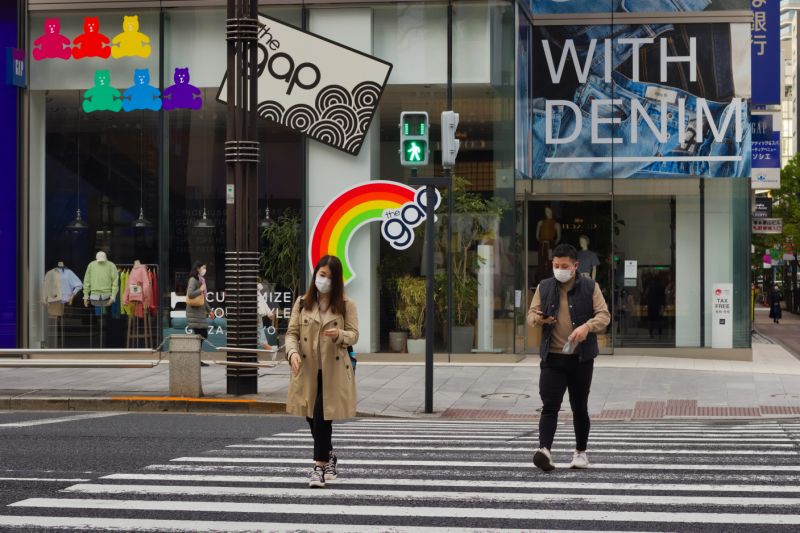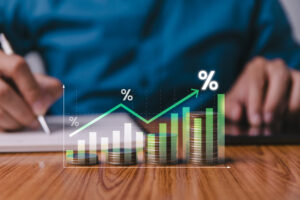
<p class="canvas-atom canvas-text Mb(1.0em) Mb(0)–sm Mt(0.8em)–sm" type="text" content="As part of WWD’s COVID-19 business insights series, “Fashion’s New World Order,” Kevin Fried, industry director of specialty retail at Google, and Blair Dunn, senior vice president of digital and e-commerce at Gap Inc., joined WWD executive editor Arthur Zaczkiewicz for a webinar called “Navigating the Path Forward.” The goal of the discussion was to unlock the mind of the consumer and examine how it has changed in the current environment and how retailers can learn to navigate them by looking at search trends from the hundreds of millions of people who use Google for shopping-related searches daily and specific data for how Gap Inc. has adapted its business for today’s dynamic market throughout the pandemic and as stores continue to reopen.” data-reactid=”20″>As part of WWD’s COVID-19 business insights series, “Fashion’s New World Order,” Kevin Fried, industry director of specialty retail at Google, and Blair Dunn, senior vice president of digital and e-commerce at Gap Inc., joined WWD executive editor Arthur Zaczkiewicz for a webinar called “Navigating the Path Forward.” The goal of the discussion was to unlock the mind of the consumer and examine how it has changed in the current environment and how retailers can learn to navigate them by looking at search trends from the hundreds of millions of people who use Google for shopping-related searches daily and specific data for how Gap Inc. has adapted its business for today’s dynamic market throughout the pandemic and as stores continue to reopen.
<p class="canvas-atom canvas-text Mb(1.0em) Mb(0)–sm Mt(0.8em)–sm" type="text" content="Consumer behavior is ever-changing, especially in the wake of the multiple crises this year. “The past two to three months have seen dramatic shifts in consumer behavior,” Fried said. “They’ve seen dramatic shifts in shopping behavior, and we don’t need to look any further than our own behavior to observe all of this. If your life looks anything like my life, your commute to work [has] changed to a walk to the kitchen table [and] you’re experiencing that same kitchen table being used to educate your children, and you’re also becoming far more reliant on all the digital tools that we’ve always used.”” data-reactid=”21″>Consumer behavior is ever-changing, especially in the wake of the multiple crises this year. “The past two to three months have seen dramatic shifts in consumer behavior,” Fried said. “They’ve seen dramatic shifts in shopping behavior, and we don’t need to look any further than our own behavior to observe all of this. If your life looks anything like my life, your commute to work [has] changed to a walk to the kitchen table [and] you’re experiencing that same kitchen table being used to educate your children, and you’re also becoming far more reliant on all the digital tools that we’ve always used.”
<p class="canvas-atom canvas-text Mb(1.0em) Mb(0)–sm Mt(0.8em)–sm" type="text" content="More from WWD” data-reactid=”22″>More from WWD
In comparison to digital tools acting in a way to assist people’s lives, they have also become a primary source of connecting to family, friends, loved ones and coworkers as people continue to make adjustments to stay connected. Differences have similarly changed in the retail space as items have taken on new meanings as essential and nonessential as some nonessential categories have pivoted into becoming far more important to consumers.
“The challenging thing that we’re experiencing consumer behavior shifts right now is that they are incredibly volatile,” Fried said. “For an industry where we could see consumer behavior changes coming and moving into the future, they tend to be all over the map right now. The trick really does become rather than being the best predictors of the future, how do we lean into the tools and the products and the things available to us to be able to navigate that change in real-time, for our part of it, where we see the majority of the changes are in what people are buying, how they are buying it, who they are buying it from.”
<p class="canvas-atom canvas-text Mb(1.0em) Mb(0)–sm Mt(0.8em)–sm" type="text" content="The pandemic has largely served as an accelerant for companies’ long-term plans of integrating technology and strategy into ongoing workflows as retail has shifted to a largely digital landscape and e-commerce has become king. In the last two to three months, companies have instituted strategies that they had planned to develop over the next two to three years.” data-reactid=”27″>The pandemic has largely served as an accelerant for companies’ long-term plans of integrating technology and strategy into ongoing workflows as retail has shifted to a largely digital landscape and e-commerce has become king. In the last two to three months, companies have instituted strategies that they had planned to develop over the next two to three years.
According to Fried, for some companies, this meant distilling many small initiatives to prioritize a few large initiatives all while dealing with constraints on distribution and supply chains while trying to preserve finances in real-time. “The fortunate side effect of all of this is that it also enabled [companies] to make really important quick decisions that otherwise would have taken a very long time,” Fried said.
For businesses such as Gap Inc. e-commerce became the primary source of revenue as quarantine took effect across the globe. “The [first] things that we focused on initially were, how do we get orders to customers and how do we drive demand?” Dunn said. “And we saw an interesting interaction with digital marketing [in] a bit of a pullback after the first couple of weeks, and it was an opportunity for us to invest. We viewed it as a chance to gain market share and try to grow. I think one of the most important things we did was we kept our online distribution centers running.” Gap Inc. has more than 1,000 stores operating curbside pickup.
“I think the focus of the company in a very positive way started shifting toward digital, both from an investment in terms of leadership and culture, and really just a platform for us to advocate and invest and do things differently,” Dunn said. “As we think forward, it just reinforces for me that those omnichannel capabilities are going to become absolutely critical. We’re seeing probably about a two to three times increase in BOPIS from even six months ago and that’s the customer responding to the new capabilities, getting more comfortable with digital, and also respecting the social distancing and the need to have a different way of shopping.”





